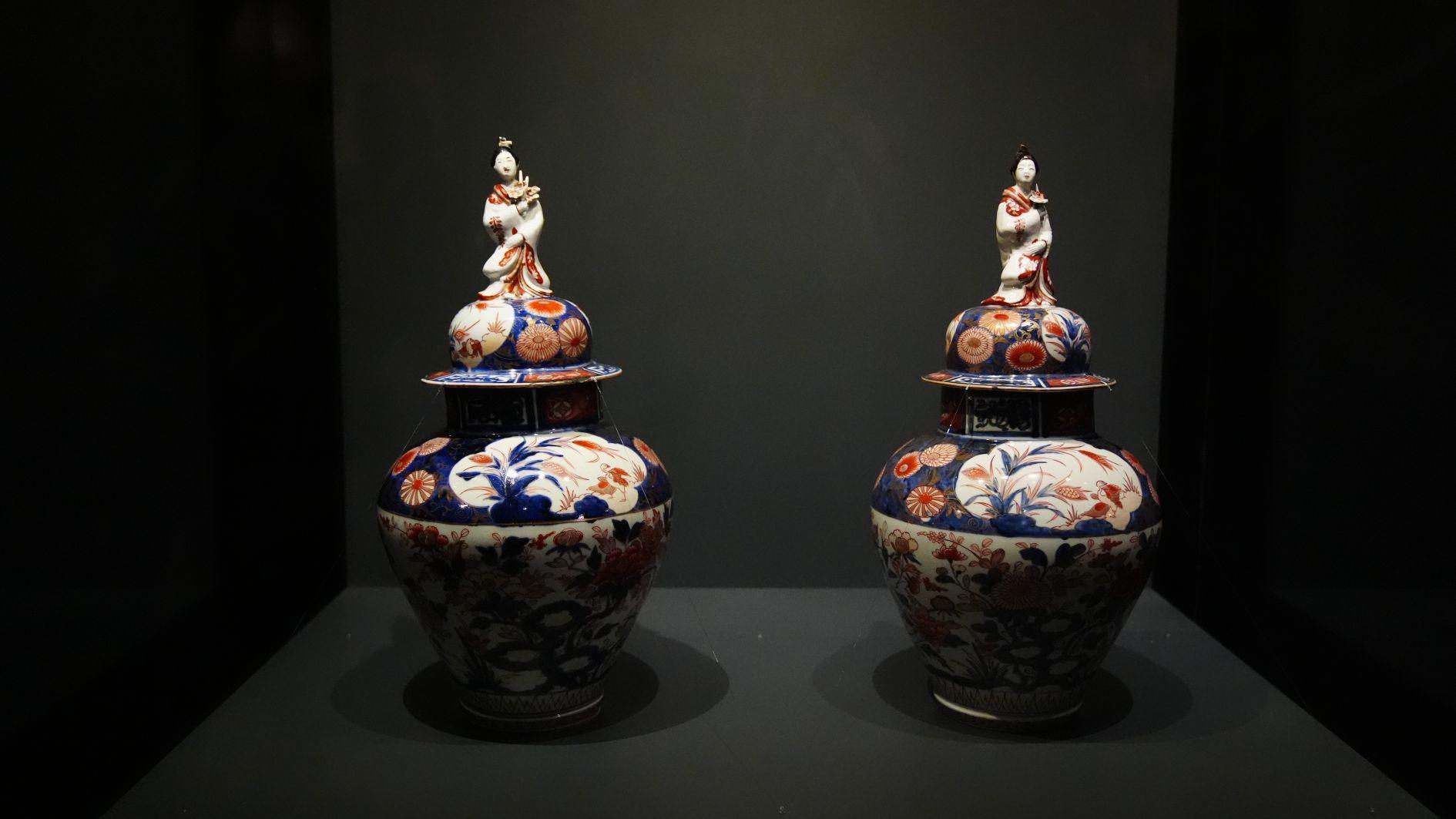
The “Japanese Ceramics from the Idemitsu Museum Collection” exhibition has opened at the Turkish and Islamic Arts Museum (TIEM) in Sultanahmet as part of events celebrating the 100th anniversary of diplomatic relations between Türkiye and Japan.
The exhibition, organized with the cooperation of the Idemitsu Museum of Arts and the Culture and Tourism Ministry Directorate General of Cultural Assets and Museums, brings together 59 rare ceramic works and will run until Nov. 2.
The opening ceremony was attended by Türkiye’s Deputy Minister of Culture and Tourism Gökhan Yazgı, Princess Akiko of Japan, Idemitsu Museum President Sachiko Idemitsu, ministry and embassy officials and invited guests.
Speaking at the ceremony, Yazgı underlined that the exhibition is not only a celebration of a century of diplomatic relations but also a meaningful symbol of cultural dialogue.
Referring to the 125th anniversary of the Ertuğrul frigate disaster, he stressed that the tragedy created a strong emotional bond between the two nations and that the solidarity shown by Japan after the 2023 earthquakes was a testament to the sincerity of bilateral friendship.
“Projects to make our museums resilient to disasters once again revealed the value of Japan’s contribution,” Yazgı said.
Highlighting that cultural cooperation goes beyond exhibitions, Yazgı pointed to restoration training programs with the Japanese Institute of Anatolian Archaeology and capacity-building programs by JICA. He recalled that 2003 was declared the “Year of Türkiye” in Japan and that 2019 was marked as the “Year of Turkish Culture,” with exhibitions attracting major interest.
“Last year in Tokyo we opened another exhibition as a fine example of this partnership. Today, 59 valuable ceramics from the Idemitsu collection are presented here, reflecting not only aesthetics but also Japan’s deep cultural heritage,” he said.
He also thanked institutions and individuals who contributed to the project, including Turkish Airlines, and paid tribute to late archaeologist Sachihiro Omura, whom he described as a “friend of Anatolia who built a lasting cultural bridge.”
Princess Akiko said Japanese ceramics had long reached the world beyond Japan, emphasizing their importance in daily life. She expressed admiration for the fact that Ottoman palaces also used Japanese ceramics, adding that this reflected deep cross-cultural appreciation.
Turning to the shared tea cultures of the two nations, she noted: “For this exhibition, pieces related to the tea ceremony were requested. Japanese tea is vivid green and reflected in the colors of our ceramics, while Turkish tea, served in transparent glasses, highlights its unique red color. Though different, both cultures share the spirit of hospitality through tea.”
The exhibition showcases the long and fascinating history of Japanese ceramic art, one of the most distinguished expressions of the nation’s cultural heritage, and will remain open to visitors until Nov. 2 at the Turkish and Islamic Arts Museum in Sultanahmet.